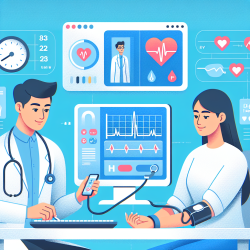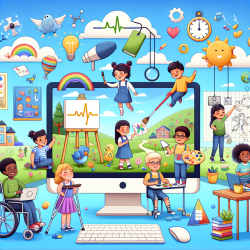Remote Patient Monitoring (RPM) is revolutionizing the way healthcare is delivered, particularly in schools and other settings where traditional healthcare resources may be limited. According to the research article, "An Infrastructure Framework for Remote Patient Monitoring Interventions and Research," RPM offers significant potential for improving patient care while reducing costs. This blog post will explore the key components of the RPM infrastructure framework and how practitioners can leverage these insights to enhance their practice.
1. Data Collection
The first step in any RPM intervention is data collection. This involves gathering patient data through various devices, such as wearable sensors. Key considerations include:
- Which patients are suitable for RPM?
- What types of data should be collected?
- How frequently should data be collected?
Practitioners should focus on selecting patients who will benefit most from RPM, such as those with chronic conditions. The type of data collected should be relevant to the patient's health status, and the frequency of data collection should balance the need for information with the risk of patient burnout.
2. Data Transmission and Storage
Once data is collected, it must be securely transmitted and stored. Key questions to consider include:
- Is there sufficient connectivity?
- Is the data transmission secure?
- Can data move across health systems software?
Ensuring robust connectivity and security measures are crucial for the successful implementation of RPM. Interoperability between different health systems can enhance the utility of the collected data.
3. Data Analysis
Raw data must be analyzed to provide actionable insights. Important considerations include:
- What analysis techniques are appropriate?
- Which comorbidities should be included in the analysis?
- What biases exist within the analysis and how should they be mitigated?
Practitioners should employ both static and dynamic analysis techniques to interpret the data effectively. Including comorbidities in the analysis can provide a more comprehensive view of the patient's health, while addressing potential biases ensures equitable care.
4. Information Presentation
The final step is presenting the analyzed data to clinicians. Key questions include:
- Is RPM information accessible in the right electronic health record software?
- How should the decision-maker receive information?
- What is the right amount of information to provide to decision-makers?
Effective presentation of RPM data can significantly impact clinical decision-making. Integrating RPM data into existing electronic health records (EHR) systems can streamline workflows and reduce cognitive load on healthcare providers.
By addressing these key components, practitioners can optimize their RPM interventions, leading to improved patient outcomes and more efficient use of resources.
To read the original research paper, please follow this link: An Infrastructure Framework for Remote Patient Monitoring Interventions and Research.










